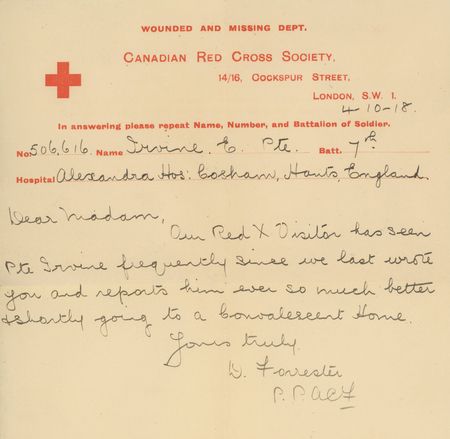
 604 465 4322
604 465 4322General Store Site 12294 Harris Road Pitt Meadows, B.C.
Click Here for Directions& Visiting Hours

Looking Back: In Flanders Fields
Looking back article from November 2015
Nov. 11 is Remembrance Day and the Pitt Meadows Museum will mark the date with exhibits and a slide show at the cenotaph ...
This year also marks the 100th anniversary of a seminal year for the Canadian Overseas Expeditionary Force in the First World War. Fought from April 22 to May 25 in 1915, Canadians were at the forefront of the 2nd Battle of Ypres in Belgium. This battle marked the first true use of chemicals in warfare and the allied troops were caught off guard when Germany released chlorine gas on their lines.
Overseas for less than a year, our troops had no good boots or helmets and certainly no gas masks. But the Canadians, along with the British, fought on for more than two weeks and eventually held the front. However, more than Canadian 1,000 lives were lost, and another 600 injured. When more gas was released in May, the Canadian troops were somewhat better equipped to handle it, having received gas masks, which replaced the urine soaked cloths they had improvised with in April.
It was at Ypres that Major Dr. John McCrea also came of age, putting pen to paper on May 3 to write In Flanders Fields as a tribute to his friend Alexis Helmer, who had died in battle the day prior. Before the end of the year, the poem would be published in Punch Magazine and would become the work that defined this war and those to come.
Dr. McCrea would leave the battle lines after Ypres, being moved in June to the Number 3 Canadian General Hospital at Boulogne, France. Thereafter, he had numerous promotions, with his last on Jan. 13, 1918 to consulting physician to the British Armies in France. But this was short lived as he passed away on Jan. 28, 1918 from pneumonia and meningitis.
However, his poem lives on and we can wear our poppies with additional pride this Remembrance Day knowing the Canadian who wrote it did so 100 years ago this year.
Pitt Meadows sent 27 young men off to fight in the First World War. None were at Ypres as the first to enlist did so later in that year. At least one, Roland R.F.C. Thomson, was at the Battle of Vimy Ridge in 1917. He is the only enlistee from this community not to return from the war.
Over the years, at this museum, we have collected a small number of items from the ‘Great War.’ In our city’s centennial year, a munitions worker pin and a medical services corps ring were donated. A few years earlier, the discharge papers (with original envelope) for Albert Stevens were brought to us. This year, various clippings and paperwork for Private E. Irvine, including a 1918 letter to his mother from the Canadian Red Cross Alexandra Hospital in England, were brought in to the museum.
Little pieces of some young men’s lives collected, saved and passed from generation to generation so that 100 years after a world-altering conflict they are saved for presentation to our generation and to generations to come, to remind all of us of these men’s sacrifice.
Leslie Norman, Curator at the Pitt Meadows Museum





